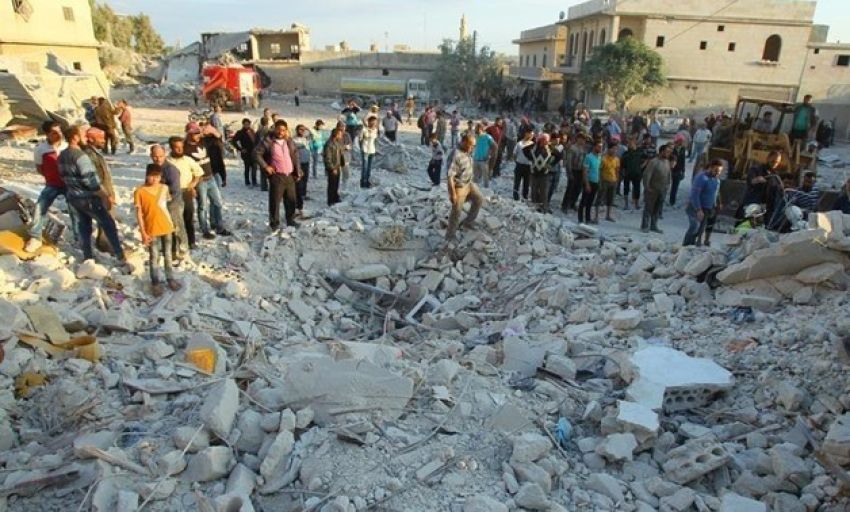
The Bashar al-Assad regime has captured more than a third of Idlib, a province in north-western Syria, which had been controlled by rebels. The regime began its current offensive in December last year. Many previous attempts had failed.
About 900,000 people have been displaced by the latest fighting, according to United Nations figures. Many of them had previously been displaced from their homes in other parts of Syria.
The Syrian and Russian air forces have bombed rebel-held towns very heavily. UN official Rupert Colville has accused them of targeting hospitals and schools. "The sheer quantity of attacks on these hospitals, medical facilities, [and] schools would suggest they can't all be accidental", he said.
Prior to this offensive, nearly all of Idlib and parts of neighbouring provinces had been controlled by anti-Assad armed groups. These rebels were not united, but had sometimes fought each other for control of territory.
The strongest of these groups is Hayat Tahrir al-Sham, an extremely reactionary group with a history of persecuting religious minorities and repressing activists fighting for democratic rights in the areas it controls.
Some of the other reactionary groups there have been coopted by Turkey and used in its war against the Rojava Revolution — a democratic revolution which began in the Kurdish areas of northern Syria in July 2012 and spread to adjacent non-Kurdish areas.
The first Turkish soldiers came to Idlib in 2017, as a result of an agreement between Russia and Turkey. More of them came in 2018, establishing 12 bases in the province. The Turkish troops were supposed to help in implementing a "de-escalation agreement".
However, these Turkey-Russia negotiations did not lead to a stable ceasefire. Fighting continued, fluctuating in intensity.
Following the Assad regime's latest offensive, Turkey has unilaterally sent more troops into Idlib. Some of them have been bombed by Assad's air force.
Assad would like to win control of the whole province. Turkey wants at least part of Idlib province to remain under the control of rebel groups that are its allies. There have been discussions between Russia and Turkey to try to reach a new agreement.
Turkish troops are also present in other parts of northern Syria, as part of Turkey's campaign to crush the Rojava Revolution.
Turkish troops entered Jarablus in August 2016, as part of a deal with the Assad regime whereby some Turkish-backed rebels were withdrawn from besieged eastern Aleppo, making it easier for Assad's forces to capture that rebel-held area.
Turkey invaded Afrin in January 2018, and invaded a strip of land between the towns of Ras al-Ain and Tal Abyad in October 2019. These invasions are being resisted by the Syrian Democratic Forces (SDF).
Assad, while opposed to the democratic revolution in north and east Syria, is also worried that Turkey will permanently occupy large areas of Syrian land. Hence there has been some limited cooperation between the Assad regime and the SDF in deterring the further expansion of the Turkish-occupied area.
However discussions between the Democratic Autonomous Administration (DAA) and the Assad regime have not led to any political solution. The DAA wants not only autonomy for north-eastern Syria, but also the democratisation of Syria as a whole. The regime wants to restore its dictatorial rule over the whole country.